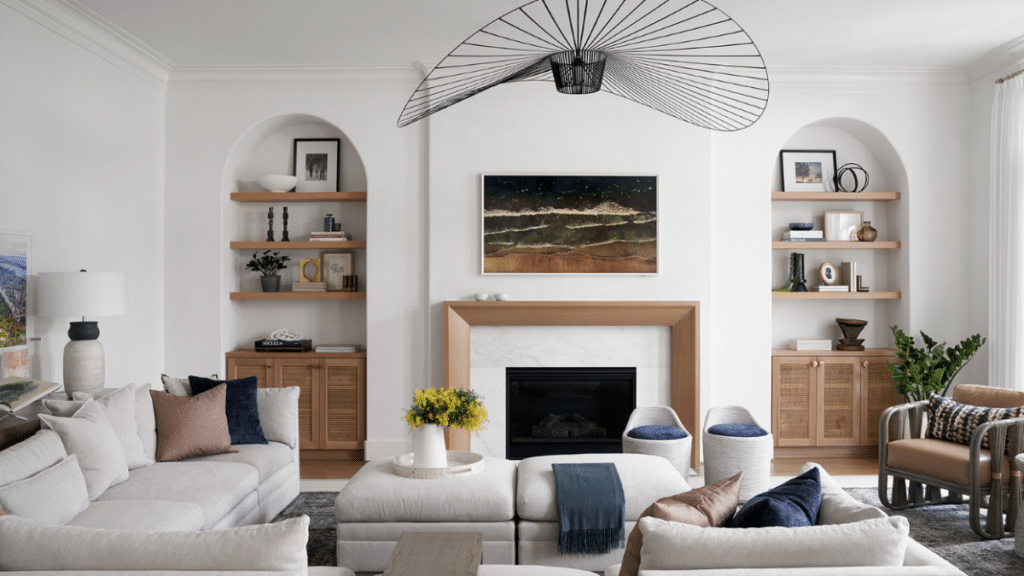Booking an interior designer can enhance your home and make it both functional and elegant. Their skills are necessary whether you are building a new office, remodeling your home, or updating a new space within a home. A professional interior designer ensures that they embody your vision while saving time and effort in the process. However, in order for your design to be executed properly, it’s essential that you hire the right professional for the job.
In case of looking for interior designers Brisbane, there are a few things that need to be taken into account. Here are the factors that you should remember before contracting an interior designer.
1. Define Your Style and Needs
Before you go searching for an interior designer, spend some time outlining your style preferences and functional needs. Modern, classic, industrial, bohemian, or any other taste, every homeowner or business owner has their own unique taste. Understanding what kinds of things you prefer will help you match yourself with a designer whose vision resonates with yours.
How to Identify Your Style:
- Look for inspiration on Pinterest, Instagram or in interior design publications.
- Curate your color palette, textures, furniture styles through aesthetics moodboard.
- Consider functionality — will you need more storage, improved lighting, or multipurpose rooms?
Some interior designers have a penchant for certain styles, so knowing what you want will help eliminate options.
2. Check Credentials and Experience
Not all interior designers have the same level of expertise or formal training. Some have formal training in interior design while others may simply have years of experience doing the work. The credentials and experience need verification before hiring.
What to Look For:
- Education and Qualifications: Are they a qualified interior designer with a degree or diploma in interior design?
- Professional Memberships: Bodies such as the Design Institute of Australia.
- Experience: How many years in the industry?
- Specialties: Do they specialize in residential, commercial or hospitality?
A seasoned designer with a solid career will know how to deal with intricate projects and potential snafus.
3. Review Their Portfolio and Past Work
One of the most effective ways to evaluate an interior designer’s style and abilities is to review their portfolio. The majority of designers maintain an online gallery of their work, presenting prior projects so you can assess whether their style will match your vision.
Key Aspects to Consider in Their Portfolio:
- Does their aesthetic align with yours?
- Have they worked on projects similar to yours (home renovations, office designs)?
- How effectively do they marry art with utility?
- Does their aesthetic vary or do they have a certain style?
4. Understand Their Design Process
Each designer has a different workflow, so understanding theirs is vital to hiring them. Good process guarantees that you will avoid derailments and all nasty surprises during the project.
A Typical Interior Design Process:
- Initial Consultation: Review your needs, budget, and expectations.
- Concept Development: Designers create preliminary mood boards or sketches or digital renderings.
- Material Selection: Picking colors, textures, furniture and decoration items.
- Project Execution: Supervising the construction, procuring materials, and coordinating installations.
- Last minute touches: Styling and making sure everything works together.
Make sure you’re comfortable with their approach and timeline before moving forward.
5. Set a Realistic Budget and Timeline
Budget is a major concern when booking an interior designer. Be upfront about your budget, and request a breakdown of costs from the designer. (Some designers charge an hourly rate; others work on a fixed fee or percentage basis.
Typical Cost Considerations:
- Design fees: Consultation, planning, and design concept creation.
- Material: Floors, wallpaper, furniture, lighting and decor
- Labor: Contract labor, carpentry, painting, and electrical work.
- Other Costs: Delivery fees, permits, and contingency costs.
Additionally, discuss the estimated timeline to ensure the project aligns with your schedule. Unexpected delays can occur, so having a buffer time in mind is always a good idea.
6. Assess Communication and Compatibility
Communication is the key to success of interior design project between you and your interior designer. As you’ll be sharing an office and working closely together, it’s essential you choose someone who you can tell’s listening to your ideas, respects your opinions and communicates effectively.
Questions to Ask During the Consultation:
- How often will project updates be held?
- What’s your communication style (email, phone, in-person meetings)?
- What is your process for receiving client feedback and modifications?
- Do you work with contractors, or do I have to hire them separately?
A designer who is responsive, organized, and collaborative will make the process much smoother and more enjoyable.
7. Clarify Post-Project Support and Maintenance
Communication is the key to success of interior design project between you and your interior designer. As you’ll be sharing an office and working closely together, it’s essential you choose someone who you can tell’s listening to your ideas, respects your opinions and communicates effectively.
What to Ask About Post-Project Support:
- Once the project is complete, will you assist with furniture placement and styling?
- Do you offer care tips for furniture and decor?
- Would you mind if I reach out for updates or minor design changes in the future?
Understanding what type of post-project support is offered will help you maintain your newly designed area in tip-top shape for years to come.
Final Thoughts
It will be an investment that will improve the look of your home or office along with its functionality and value. But, in order to find a designer who you’ll get to know and work with closely, one who can make the project successful, you need to take the time to research, interview and pick someone who aligns with your style, your budget and your way of communication.
